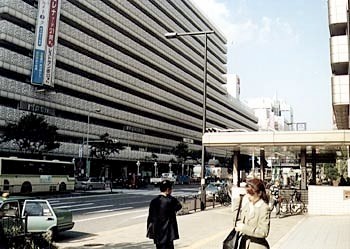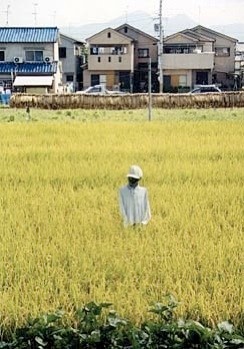

































Osaka is generally divided into two halves: "Kita" (North), the area centered on Umeda and Osaka stations, and "Minami" (South), generally used to mean the area around the Shinsaibashi and Namba subway stations. It's a convenient frame of reference, but not entirely accurate: Tennoji is the real southern heart of the city, as well as the major transit point for Wakayama and other destinations to the south. Since south was certainly the direction I was headed, this is where I chose to end the train journey and begin the bicycle journey.
As with any journey in or out of a major city, the first half hour consists of a lot of cars and exhaust fumes. There might have been nicer routes, but I wasn't sure how long the climb to Koya would take, so I opted for speed. But relatively quickly the scenery changed, and I began to see rice paddies and the scarecrows that keep watch over them - surprisingly similar to their Western counterparts. A recent innovation is a machine that makes a loud noise, like the crack of a BB gun, at regular or irregular intervals. to scare away the birds. You see (or rather hear) them often, usually in very rural areas. By my observation, it doesn't work: the birds seem to get used to the noise.